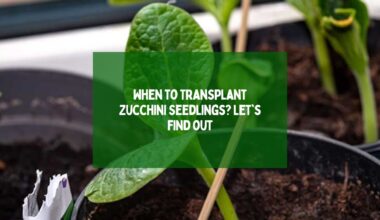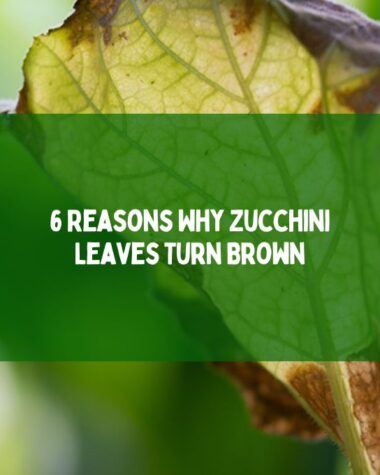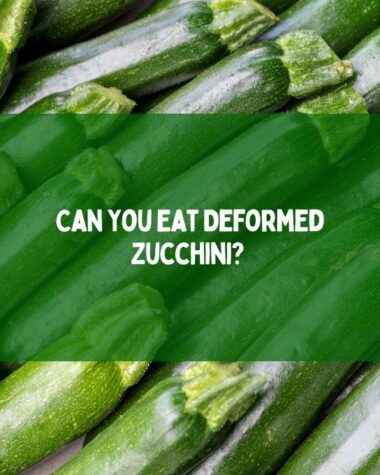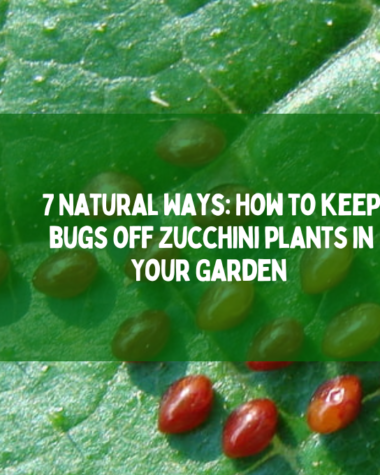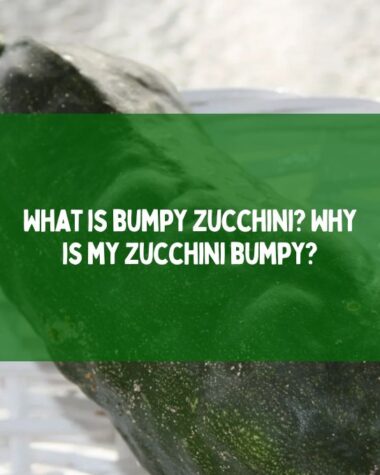Have you seen anything wrong with your zucchini this year? When zucchini is grown in fields, it can get sick because of the problem with the zucchini plant. In this article, organic gardening expert Logan Hailey talks about the zucchini plant problems that zucchini is likely to get this season, as well as how to spot, avoid, and treat them.
Growing zucchini in your yard is one of the easiest things you can do. One planting of these quick-growing summer zucchini will give you food all summer long. Even though there are many easy, natural ways to treat zucchini plant problems, they are not completely immune to problems.
But zucchini plants can have a lot of trouble when there are a long drought, a wet summer, insects that spread disease, or zucchini plant problems that live in the soil. Some diseases can make zucchini trees produce a lot less fruit or even kill them.
Others could grow Cucurbits like cucumbers, squash, and melons, which are related to them. Let’s look at the problems with the zucchini plant and learn how to spot them, stop them, and treat them.
Treatment of Problems with growing zucchini plants
Many Cucurbitaceae plants are like zucchini in that they have big, broad leaves and short stems. This can help keep pests away and speed up growth, but it can also make zucchini plants more likely to get a few zucchini plant problems that affect the leaves and roots.
If you’re not sure what’s wrong with your zucchini plant, use this simple advice to spot, avoid, and treat the most common viruses.
Powdery mildew
When zucchini is in a humid place, powdery mold can grow on it. In humid areas, a summer zucchini crop without white mildew would seem like a miracle.
Podosphaera xanthii, Erysiphe cichoracearum, and Sphaerotheca fuliginea are just a few of the fungi that can cause this well-known Cucurbit disease.
All of them have similar symptoms and tend to show up in the middle or end of summer when the weather is warm or when the days are dry and the nights are damp. Reports say that powdery mildew is the cause of more crop losses than any other plant disease. (abbreviated “PM” in seed catalogs).
If you don’t want your zucchini crop to go bad, choose types that are resistant to powdery mildew, keep zucchini plant problems away, and take care of plants as soon as they get sick.
How to Recognize?
Powdery mildew looks exactly like what it sounds like the leaves of your zucchini plants have a white or gray powdery layer as if someone had sprinkled flour on them. As it spreads, it might get bigger white spots, fluffy mildewed stalks, and yellow or brown leaves that are falling apart.
Do not let the white patterns and lines on the stems of some zucchini varieties confuse you. Zucchini leaves with natural white spots will have a pattern that can be seen across the whole leaf. The white spots will only be on the top surface, and they won’t look “fuzzy” or random like PM.
How to prevent it?
This fungus can be easily avoided by making sure there is enough airflow and movement in society. The most important way to protect plants is to water them at the roots.
The wrong way to water a zucchini is from above. (or any squash, for that matter). Powdery mildew spreads when it rains or when water comes up from the ground, so it’s important to keep the leaves dry by using drip irrigation or soaking lines.
Keeping plants far enough apart is another key to avoiding PM. If your yard is especially prone to fungus attacks, leave 18 to 24″ between zucchini plants to keep enough airflow between them.
How to Get rid of this disease?
If your zucchini plants get white mold in late summer, don’t worry. The easiest thing to do is to cut off the sick leaves and throw them away, being careful not to spread the germs.
You can also clean the leaf surface with a weak neem oil solution to slow the spread and stop more bugs from coming in.
Related Reading:
- 5 Effective Strategies to Control Weeds While Growing Cucumbers
- How To Repair Overwatered Tomato Plants?
Downy Mildew
Do not let water drops land on the leaves of the zucchini, as this will help the disease Downy Mildew spread. Powdery mildew looks like grit, while downy mildew is spotted and golden in color. Most of the time, it starts or stops at the beginning or end of the season, when it is cold and wet.
An oomycete, which resembles a fungus and is associated with phytoplankton, is the culprit behind downy mildew. For them to grow, they need water.
How to Recognize
Yellow to light green spots on the top of the blade is the most important early sign of down mildew. Around the marks will be the lines of the leaves.
Later, they may turn the whole leaf brown, which is often the same as cold damage. To tell it apart from angled leaf spots, look for fuzzy gray or purple spots on the undersides of the leaves.
How to prevent it?
Downy fungus needs a wet area on the leaves to spread. This means that the key to success is to keep water droplets away from the plants. Don’t draw water from the air. (Instead, use drip or soaker hoses.) To let in more air, plant zucchini later in the season and further apart. You can also grow zucchini in greenhouses or low tunnels to try to keep the rain from falling on the leaves.
How do Get Rid of this disease?
Use a weak neem solution or an organic poison to get rid of downy mildew and stop it from spreading. But if it’s the end of the season and the plant is badly damaged, it’s usually best to take the whole thing and throw it away.
Don’t touch plants when it’s windy and don’t recycle plant waste because these things can spread disease germs.
Blossom End Rot
If you see dark spots on your zucchini, you should throw it away right away. Even though blossom end rot is not an actual zucchini plant problem, it is a very common problem that looks like an infection.
Other plant problems like tomato blossom end rot can also affect Zucchini if you grow them with this plant. It results from irregular watering or a lack of calcium that is readily available in the soil.
How to Recognize?
Blossom end rust can be found on the “butts” of your zucchini, where the flower ends. It starts with buds that look soft or like they are dying. When the rotted end of the veggie moves to the middle, it can turn brown and crumble.
How can you prevent it?
Follow the advice on the box to add gypsum, dolomite lime, crushed eggshells, or powdered oyster shell to your squash plant.
Zucchini also needs to stay wet all the time. They don’t want to get thirsty before drinking a lot of water at once. Use watering plans or trickle lines instead to keep the soil at a steady amount of moisture that is neither too dry nor too wet.
Cover the dirt with grass or leaves to keep it from getting too hot and dry when the sun is out.
How do I get rid of this disease?
Once bloom-end rot starts, all you can do is choose and remove the crops that are affected. Then, as was already said, improve your watering techniques and add a mineral that is good for zucchini.
Fusarium Crown Rot
If your plant looks tired and listless, it may be showing the first signs of Fusarium crown Rot. It’s never a good sign to see limp leaves or a plant that’s sagging and the dirt is very wet.
This fungus causes zucchini plants to rot from the roots up, and it can kill an entire plant in just a few days. Fusarium solani, a type of fungus that can live in the soil and grow on dead plants, is the cause of this illness.
How to Recognize?
The first sign of Fusarium is a lot of wilting. Even though the plant is getting enough water, it will look weak and dry. The leaves might get sores that are wet and get deeper until they fall off. The plant’s root might look rotten and be a different color. It might also smell bad. Also, there are red strands of fungus on the top of the dirt near the cap.
How to prevent it?
At the end of the growing season, you should always take the zucchini you didn’t use and don’t let it rot in the yard. (This can create a breeding ground for the fungus to overwinter.) Fusarium Crown Rot can also be stopped by growing different kinds of crops.
You shouldn’t grow melons, cucumbers, pumpkins, and zucchini in the same part of your yard for one to three years.
Last but not least, at the beginning of each season, add lots of fertilizer or old leaves to the soil to make sure it has a healthy microbiome and enough air. A broad fork can be used to get air into the soil. Do not overwater.
How to Get rid of this disease?
Once Fusarium starts killing your zucchini seeds, the only thing you can do is pull out the plant and throw it away. Since there is no known way to treat this sickness, it is important to stay away from it.
Verticillium wilts
Verticillium wilt can cause plants to wilt, but there is no way to treat it. This fungus likes it cool, so it can attack a wide range of plants, like squash, melons, peppers, tomatoes, and a lot of fruit trees. It often shows up in the middle to the end of summer.
It has some odd qualities that can make it hard to identify. Luckily, big seed companies have a lot of hardy varieties.
How to Recognize?
Verticillium fungi cause zucchini leaves to wilt, turn yellow, and dry up at first. Sometimes only one side of the plant dies while the other half looks fine.
How to prevent it?
Choose the strong ones with a V mark. Cleaning farming tools and getting rid of waste products are also good.
How to Get rid of this disease?
Unfortunately, there is no way to treat verticillium wilt. Plants that are sick should be taken out and burned or thrown away.
Alternaria Blight on leaves
Try not to water the plant too much to keep it from getting Alternaria Leaf Blight. Alternaria cucumerina is another common disease that affects zucchini. It is caused by a fungus that spreads quickly and attacks both cucurbits and brassicas. It can live through the winter on sick farm waste and grows well on the wet surfaces of leaves.
How to Recognize?
This leaf disease starts with big leaves and then moves on to smaller ones. It is characterized by small, angular, yellow, or brown spots with a green or yellow “halo” around them. The spots get bigger and finally join together, which causes the leaves to curl under and die.
How to prevent it?
Don’t water plants from above; instead, water them from the ground up. Covering plants could stop water from getting on the leaves during heavy rain. After you pick the zucchini, you should always clean up the yard. Neem fluid that has been diluted so it can be sprayed from the air may also help prevent illness.
How to Get rid of this disease?
Some organic fungicides, such as horsetail tea, compost tea, copper treatments, and bio-fungicides like Bacillus subtilis or Actinovate, can help with Alternaria Leaf Blight. Follow the directions on the package and put it right on the plants. Also, the best thing to do with sick leaves is to cut them off at the base and throw them away.
Cucumber mosaic virus
Pests or farming implements can spread the cucumber mosaic virus. Despite what its name says, the cucumber mosaic virus also affects plants that are related to zucchini. It is one of those diseases that sick insects or farming equipment can spread.
By making the leaves twist and look like a mosaic, the disease badly slows zucchini plants and lowers yields. There are many different types of strong ones, which is good.
How to Recognize?
The first sign of an illness is small, misshapen zucchini seeds with hard shells or pale, curled leaves. Some of the leaves may look stringy, puckered, or pressed together. On the leaf’s surface, there may or may not be a patchwork pattern in shades of golden and light green. Plants often lose their size and die quickly. Most of the time, the virus is found when there is an increase in aphids or cucumber beetles.
How to prevent it?
The easiest way to protect yourself is to use seeds that are immune to CMV, which are easy to find. The cultivars “Green Machine,” “Yellow Fin,” and “Desert” are all good choices. After each use, gardening tools should be cleaned with rubbing alcohol or bleach to keep them clean. As a partner plant, garlic, onions, or flowers with a strong smell can keep aphids and cucumber bugs away.
How do I get rid of this disease?
Get rid of any parts of the plant that are dirty. Even though the virus can’t be fully gotten rid of, a combination of 1 1/2 tablespoons of neem oil, 1/2 teaspoon of dish soap, and 1 quart of water helps get rid of aphids. Picking off cucumber bugs by hand and soaking them in clean water is necessary.
Conclusion
Once you’ve gone through the trouble of fixing problems with growing zucchini plants, you’ll probably want to do everything you can to avoid the same problem the next season. The best way to avoid farming diseases is to start with a healthy plant. In the same way that a healthy lifestyle keeps you from getting sick, a strong, growing plant can handle stress much better.
Some examples of plant stresses are pathogens, bugs, lack of water, and bad weather. Even though we can’t change the temperature, we can try to help plants grow as healthy as possible by giving them the best conditions for growth.
Zucchini needs direct sunlight, mild temperatures, sandy soil that drains well, regular watering, and at least 12 to 18 inches between plants. If a plant’s basic needs are not being met, it is more possible that germs that cause disease will get inside it.
